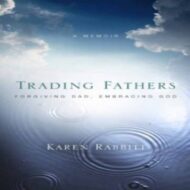Visiting Portland this past spring, we took the train downtown several times. We like architecture and often comment on the details of an entryway or cornice or the design of a window. On the fourth or fifth trip, we began to notice new aspects of the passing scene. On the first few trips, we’d been focused on not missing our stop. The tension of a new environment had honed our observation to only what was needed, but as the tension was relieved, we began to see more of what was there.
 That reminded me of how I only in the last few years have noticed that robins have little white markings on their wings, visible when they fly. There were lots of robins on the farm when I grew up, but I never noticed them. I was focused on mere emotional survival. My hypervigilance about the danger from my father was like blinders. When I first noticed those markings, I wondered, “Why have I never seen those before?” I soon realized why. The tension of my childhood was long past by that point and I could now see what’s there in the environment, from the details of the birds to the impact of the sin.
That reminded me of how I only in the last few years have noticed that robins have little white markings on their wings, visible when they fly. There were lots of robins on the farm when I grew up, but I never noticed them. I was focused on mere emotional survival. My hypervigilance about the danger from my father was like blinders. When I first noticed those markings, I wondered, “Why have I never seen those before?” I soon realized why. The tension of my childhood was long past by that point and I could now see what’s there in the environment, from the details of the birds to the impact of the sin.
If we grow up in a difficult family, we often cannot see what’s there, either the good or the evil. We perceive only what’s necessary to survive. We are utterly dependent on our parents. If the environment they create feels unsafe, we try to protect ourselves by whatever means possible. Hypervigilance feels protective, but constricts our perceptions. We might miss the robins entirely and we might misread the evil as good. Only as we look back will we be able to see what was really there.
Jesus, show us the truth about our childhoods. Give us courage to face reality.
